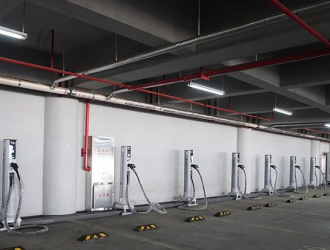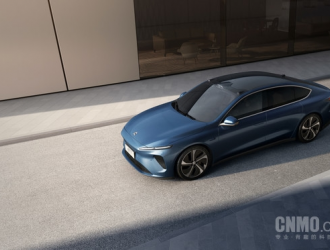本届大会以“聚焦高质量·引领新发展”为主题,集“展览展示+主论坛+11场分论坛+新品发布+品牌评选”为一体。大会共邀请到200+演讲嘉宾,汇聚了2000+来自政府部门、专家学者和充换电产业上下游企业高层,一同见证充换电产业的无限机遇,共话充换电产业未来的发展之路。

5月23日,意科能源(上海)有限公司销售及战略总监 黄翔以《Enel集团在电动汽车充电领域的经验分享》为主题进行演讲。
演讲整理

黄翔介绍道,Enel成立于20世纪60年代,起初专注于电网建设,随后逐步扩展到意大利及周边国家的电网互动和连通工作。70年代和80年代,公司在传统能源发电业务的基础上,开始将光伏、风能和水电等清洁能源引入欧洲电网。90年代,欧盟一体化推动了电网的私有化,Enel顺应这一趋势成为欧洲最大电力公司。
2016年,Enel开始大力投入能源数字化,现已成为全球管理需求响应最大的公司之一。目前,Enel有五大业务线,包括Enel Green(可再生能源资产)、Global Infrastructure & Networks(智能电网)、Global Energy & Commodity Management(电力和天然气大宗商品交易)、Enel X(数字化能源服务)和Global e-Mobility(电动汽车和电网互动)。
2023年,公司营收约960亿欧元,息税前利润约260亿欧元。Enel作为全球第二大电力公司,仅次于中国国家电网,用户数量接近8000万。为了推动交通电动化,公司于2022年成立了Enel X Way品牌,致力于为包括中国在内的全球市场提供智能绿色的电动出行解决方案和综合服务。
在电动汽车充电领域,Enel已有15年的发展历史。2010年,公司开始布局充电业务,2013年推出50千瓦快充桩,2016年在欧洲建设快充网络。2017年收购了一家美国充电桩硬件公司,2019年入股欧洲最大的充电网络互联互通平台的HUBJECT公司,2021年与大众在意大利成立合资公司,计划建设3000个充电站点。2022年,Enel X Way正式成立,提供从建站寻址、补贴政策到软硬件产品的全面服务,在国内将与星星充电和特来电等展开竞争。
Enel还开发了远程控制系统,将区域电力调度与充电结合,利用需求响应部门的成熟商业模式,推动相关项目。公司的APP展示了在欧洲的快充桩网络,集成了20多万根充电枪,主要部署在意大利、西班牙和利比里亚半岛等地,每年充电次数达两三百万次。
为了更好地布局产业,Enel在硬件方面进行了深入定义,通过与供应商合作,确保产品符合法规和公司的标准和需求。所有软件和平台层面的内容均由Enel自主开发,供应商需通过联调才能加入公司的供应链。
Enel在全球多个地区设有高标准的充电站点,合作伙伴涵盖主要车企、商用车队、公交公司和零售商,展示了公司在电动化和能源转型方面的实力和影响力。
从充电行业发展的底层逻辑来看,他认为:整个充电设备制造商的设备实际上销售给充电运营商(CPO),CPO的核心业务是电力服务,而电力来自配电公司(电网公司),电网公司则从发电厂购电。在这个产业链中,欧洲的逻辑线得以贯通的原因主要在于政策驱动和价值链上的各个环节共同遵循规则。在国内,这一逻辑链也受到类似因素的影响。
近年来,气候变化、能源安全和智能电网的发展推动了政策的制定和实施。欧盟的《欧洲气候法》、碳排放交易系统、欧洲绿色交易计划(Green Deal)以及俄乌战争后出台的REPower、EU等法规,都表明能源、电力和工业领域的所有议题都集中在几个核心法案之中。国内政策也是围绕“碳达峰”目标进行部署,例如尚未完全通过的《能源法》。
在这一背景下,输配电领域面临设备老化、可再生能源接入的波动性和不稳定性等问题。设备投资涉及经济成本和投资回报率,商业模式的可行性以及资本市场的认可度也是关键问题。
他强调,充电网络建设同样面临挑战。CPO在建站过程中,最核心的问题是电力供应。无论是建设10个、20个还是100个充电桩,电力容量的确保都是难点。然而,正是这些挑战推动了技术进步和行业的发展。
基于充电行业发展的底层逻辑,他特别提出两个问题:
第一,充电行业这个产业链最核心的挑战是什么。
他表示,从欧洲市场来看,欧洲充电行业产业链的核心挑战在于解决根本问题,即如何有效提供充电服务。这个过程涉及电网的配合,以及新技术的引进和开发,这些都是行业关注的重点。
他以去年挪威的一个行业案例为例,一个项目需要建设4个充电车位,每个充电桩功率为60kW,总功率为240kW。理论上,申请一个400千伏安的变压器即可。然而,在向挪威当地政府申请电力时,得到的答复是需要等待8年才能获得所需的容量。八年时间内,国内的充电桩可能已经报废,而这个项目才刚刚起步。这种困境中的产业链障碍,需要通过合理的商业逻辑和利益分配来解决,才能让项目顺利运转。
目前,为解决该问题也有一些解决方法,比如增加储能设备。在国内,增加储能设备可能会使投资回报率变得不理想。但在欧洲,由于电价波动大、电力市场开放,支持现货交易和长期交易,商业模式具有足够的弹性。他强调,当企业找到自身优势点时,其在价值链中的位置和意义也就显现出来。
第二,充电行业产品的窗口期还有多少。
他指出,窗口期本身这个概念非常笼统,单从设备端来看,国内企业难度最高的是给大型能源公司或电力公司提供高功率直流桩。目前,国内有几家原始设备制造商是Enel的供应商,但进入供应链通常需要约两年时间。这一过程涉及产品定义、软硬件调试、信息安全、售后维护及现场服务等问题,无论对于哪种规模大小的企业,进入Enel全球体系都具有一定的准入门槛。
以售后维护为例,欧洲的商业氛围与国内不同,欧洲更注重商业模式的稳定运行、长期的稳定收益以及安全性。国内企业在欧洲提供服务时,若出现现场售后问题,可能会面临被停产或核查的风险。
他强调,国内设备制造商进入一家大型CPO或能源公司的采购系统需要2到3年的周期,大功率直流桩的产品研发周期约为两年,产品需经过2到3次迭代才能成熟。现在的800V平台已经普及,未来5到8年内,1000V平台也将成为主流。如果未能在这段时间内进入欧洲供应链,将很难再有机会。
对于家庭充电桩,欧洲本土制造的理念在不断加强,许多本土企业已经生产出不错的产品,欧洲企业选择本土产品也是顺其自然的过程。因此,国内企业在交流桩领域的窗口期可能已经过去。
黄翔指出,在某些特定细分领域,如小功率直流桩,目前在欧洲市场上还没有成熟的产品。在车队管理和物业地产等领域,可能还有3到5年的机会。这类产品功率相对较小,经过两到三代的迭代后,市场可能会趋于稳定,因此这是国内企业的窗口期。
From May 22 to 24, the 2024 Third China International Charging Pile and Battery Swap Station Exhibition and the 2024 Tenth China International Electric Vehicle Charging and Battery Swap Industry Conference, co-hosted by Charging Pile Network, Charging and Battery Swap 100-Person Association, and Light Storage Charging and Battery Swap Industry Alliance, were grandly held at the Shanghai Auto Exhibition Center.
This year's conference, themed "Focusing on High Quality, Leading New Development," integrated "exhibition display + main forum + 11 sub-forums + new product release + brand evaluation." The conference invited over 200 speakers and gathered more than 2000 high-level participants from government departments, experts, scholars, and upstream and downstream enterprises in the charging and battery swap industry. Together, they witnessed the infinite opportunities in the charging and battery swap industry and discussed the future development path of the industry.
On May 23, Huang Xiang, Sales Director and Strategic Director of Enel (Shanghai) Co., Ltd., delivered a speech on "Enel's Experience in the Electric Vehicle Charging Field." Huang Xiang introduced that Enel was established in the 1960s, initially focusing on grid construction and gradually expanding to grid interaction and connectivity in Italy and neighboring countries. In the 1970s and 1980s, based on traditional energy generation, the company began integrating clean energy sources such as photovoltaics, wind, and hydropower into the European grid. In the 1990s, EU integration promoted grid privatization, and Enel became the largest power company in Europe, adapting to this trend.
In 2016, Enel heavily invested in energy digitization and has since become one of the largest global demand response management companies. Enel currently has five main business lines: Enel Green (renewable energy assets), Global Infrastructure & Networks (smart grid), Global Energy & Commodity Management (electricity and gas commodity trading), Enel X (retail business), and Global e-Mobility (electric vehicles and grid interaction).
In 2023, the company's revenue was approximately 96 billion euros, with EBITDA of about 26 billion euros. Enel is the second-largest power company in the world, second only to the State Grid Corporation of China, with nearly 80 million users. To promote transportation electrification, the company established the Enel Way brand in 2022, dedicated to providing customers with a better electrification experience.
Enel has 15 years of experience in the electric vehicle charging field. In 2010, the company began developing its charging business, launching a 50kW fast-charging pile in 2013, and building a fast-charging network in Europe in 2016. In 2017, it acquired a U.S. charging pile hardware company, and in 2019, it invested in HUBJECT, Europe's largest charging network interoperability platform. In 2021, it established a joint venture with Volkswagen in Italy, planning to build 3,000 charging stations. Enel Way was formally established in 2022, providing comprehensive services from site selection and subsidy policies to hardware and software products, similar to domestic companies like Star Charge and TELD.
Enel also developed a remote control system that combines regional power dispatch with charging, leveraging the mature business model of the demand response department to promote related projects. The company's app showcases its fast-charging network in Europe, integrating over 200,000 charging guns, mainly deployed in Italy, Spain, and the Iberian Peninsula, with two to three million charging sessions annually.
To better develop the industry, Enel has deeply defined its hardware by collaborating with suppliers to ensure products comply with regulations and company standards. All software and platform content are independently developed by Enel, and suppliers must pass joint debugging to join the company's supply chain.
Enel has high-standard charging stations in multiple regions worldwide, with partners including major car manufacturers, commercial fleets, bus companies, and retailers, showcasing the company's strength and influence in electrification and energy transformation.
Regarding the fundamental logic of charging industry development, Huang Xiang believes that the core of the industry chain lies in charging equipment manufacturers selling their equipment to Charging Point Operators (CPOs), whose core business is electricity services. Electricity comes from distribution companies (grid companies), which purchase power from power plants. This industrial chain in Europe is connected mainly due to policy-driven initiatives and adherence to rules across various segments of the value chain. In China, similar factors influence this logic chain.
In recent years, climate change, energy security, and the development of smart grids have driven policy formulation and implementation. The EU's European Climate Law, carbon emission trading system, European Green Deal, and post-Russia-Ukraine war regulations like REPowerEU indicate that all issues in the energy, electricity, and industrial sectors focus on a few core bills. Domestic policies are also deployed around the "carbon peak" goal, such as the not-yet-passed Energy Law.
In this context, the transmission and distribution field faces challenges such as equipment aging and the volatility and instability of renewable energy integration. Equipment investment involves economic costs and return on investment, and the feasibility of business models and capital market recognition are key issues.
Huang Xiang emphasized that building charging networks also faces challenges. The core issue for CPOs in building stations is ensuring power supply. Whether building 10, 20, or 100 charging piles, ensuring power capacity is difficult. However, these challenges drive technological progress and industry development.
based on the fundamental logic of charging industry development, he highlighted two key issues:
The core challenge of the charging industry chain.
From the European market perspective, the core challenge of the European charging industry chain is effectively providing charging services. This process involves grid cooperation and the introduction and development of new technologies, which are key focus areas for the industry.
He cited an industry case in Norway last year, where a project needed four charging spaces, each with a power of 60kW, totaling 240kW. Theoretically, applying for a 400kVA transformer would suffice. However, when applying for power from the local government, the reply was an eight-year wait for the required capacity. In eight years, domestic charging piles might already be obsolete, while this project was just starting. Overcoming such industrial chain obstacles requires reasonable business logic and benefit distribution to ensure project smooth operation.
Currently, there are solutions to this problem, such as adding energy storage devices. In China, adding energy storage may make the investment return rate undesirable. But in Europe, due to significant electricity price fluctuations and an open power market supporting spot and long-term trading, the business model has enough flexibility. He emphasized that when a company finds its advantage, its position and significance in the value chain become apparent.
The window period for charging industry products.
He pointed out that the window period concept is very broad. From the equipment perspective, the most challenging task for domestic enterprises is providing high-power DC piles to large energy or power companies. Currently, several domestic equipment manufacturers are Enel's suppliers, but joining the supply chain usually takes about two years. This process involves product definition, software and hardware debugging, information security, after-sales maintenance, and on-site services. Regardless of the company's size, entering Enel's system has certain entry barriers.
For example, in after-sales maintenance, the commercial atmosphere in Europe differs from that in China. Europe emphasizes stable operation, long-term stable revenue, and safety in business models. When domestic companies provide services in Europe, if on-site after-sales issues arise, they might face production suspension or inspection risks.
He emphasized that entering a large CPO or energy company takes 2 to 3 years, and the R&D cycle for high-power DC piles is about two years, with products maturing after 2 to 3 iterations. The 800V platform is now widespread, and the 1000V platform will become mainstream in the next 5 to 8 years. If a company fails to enter the European supply chain within this period, it will be challenging to have another opportunity.
Regarding home charging piles, the concept of local manufacturing in Europe is continuously strengthening, with many local companies already producing good products. European companies naturally choose local products, meaning the window period for domestic companies in the AC pile field might have passed.
Huang Xiang noted that in certain specific niche areas, such as low-power DC piles, no mature products exist in the European market. In fields like fleet management and property estates, there might still be a 3 to 5-year opportunity. These products have relatively low power, and after two to three generations of iteration, the market may stabilize, presenting a window period for domestic companies.








